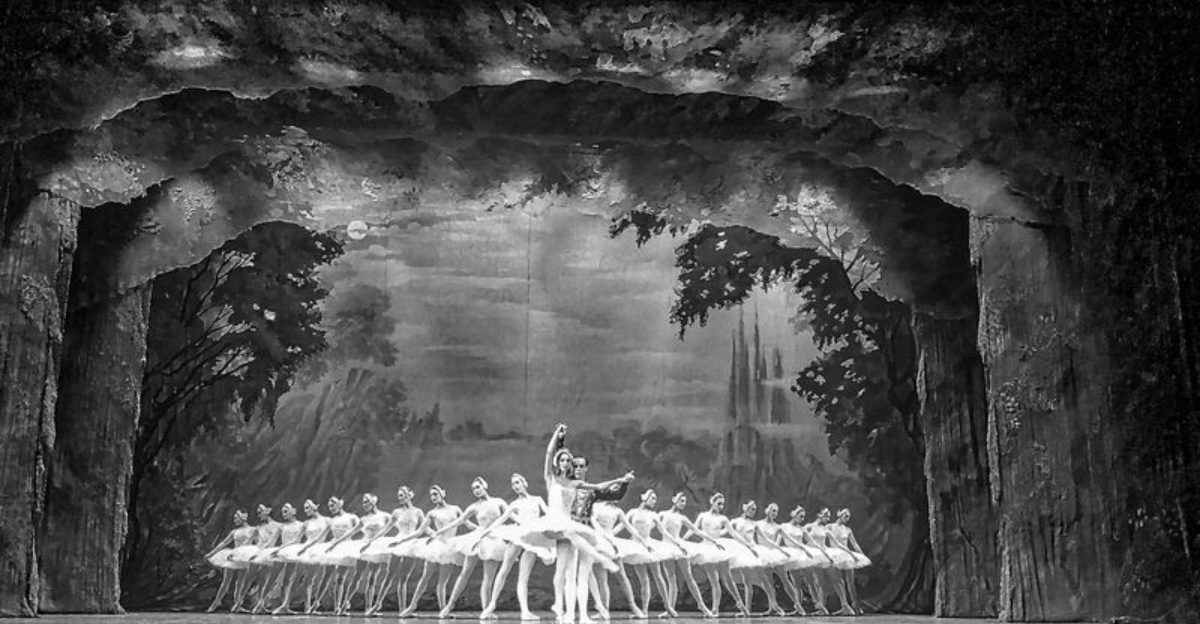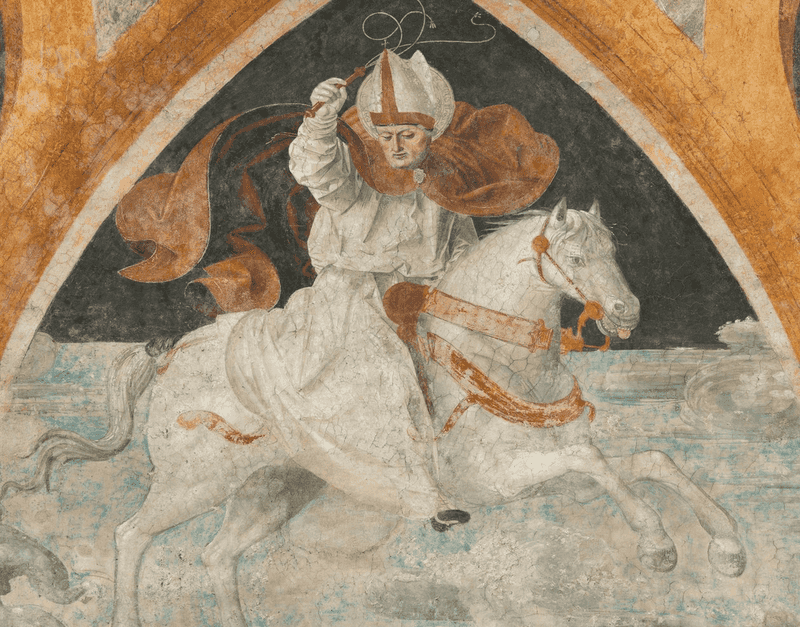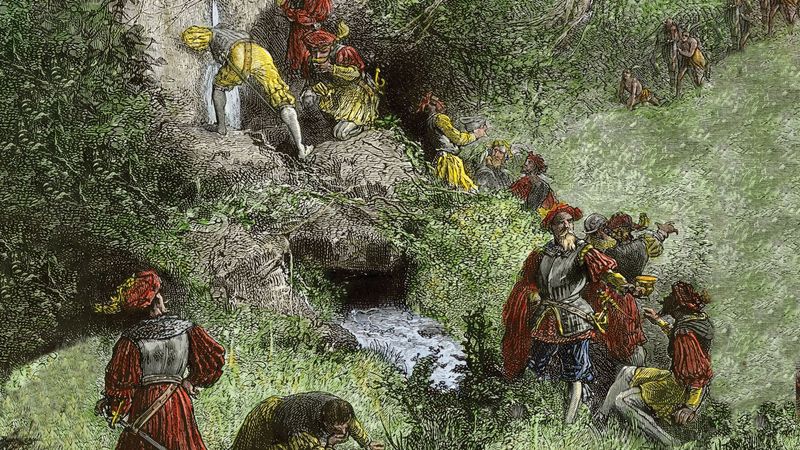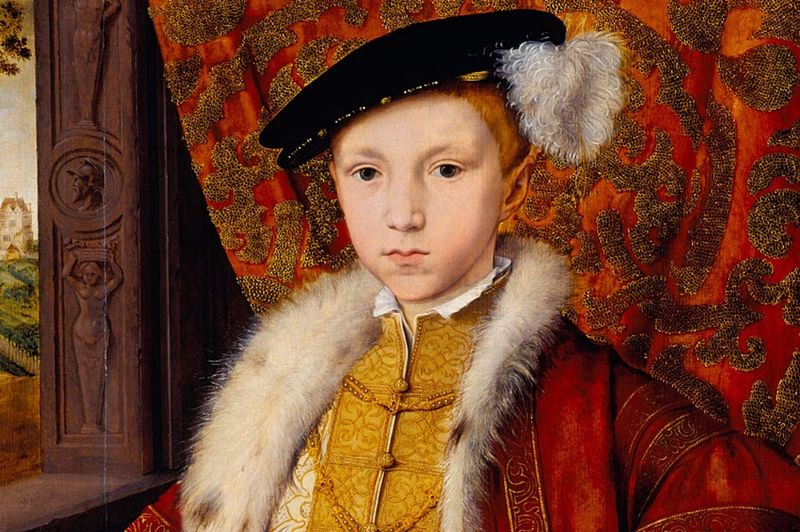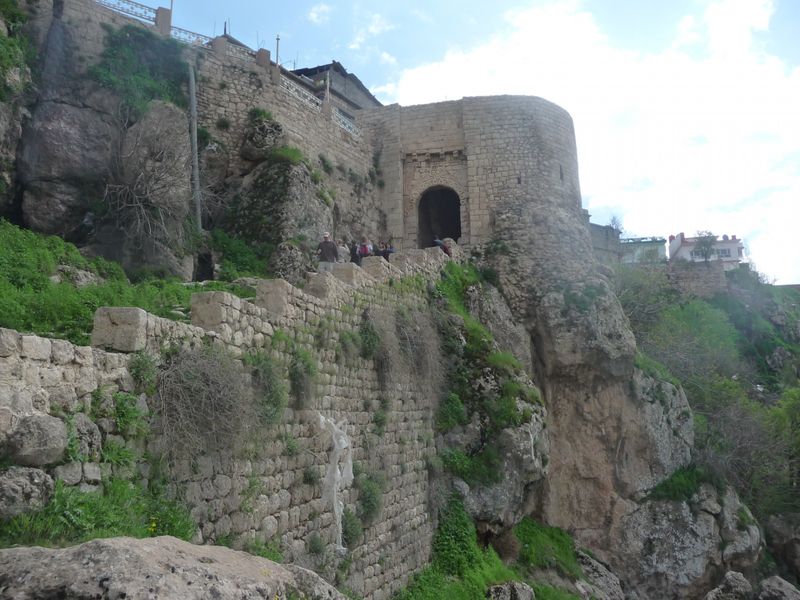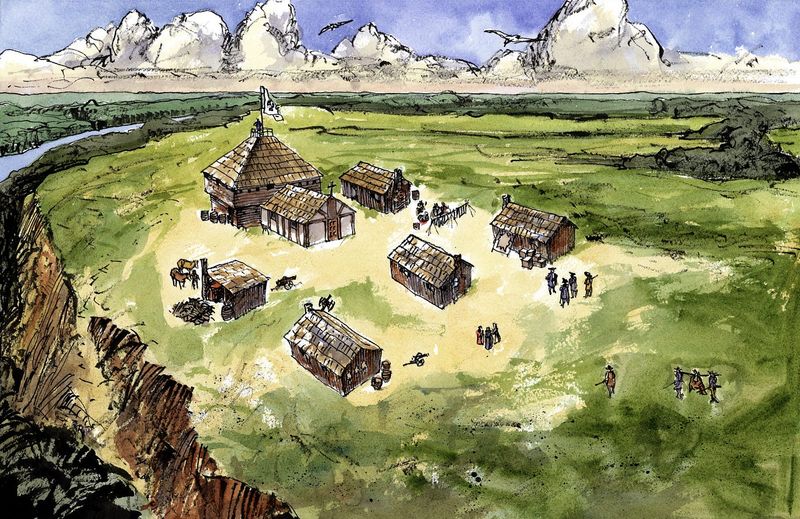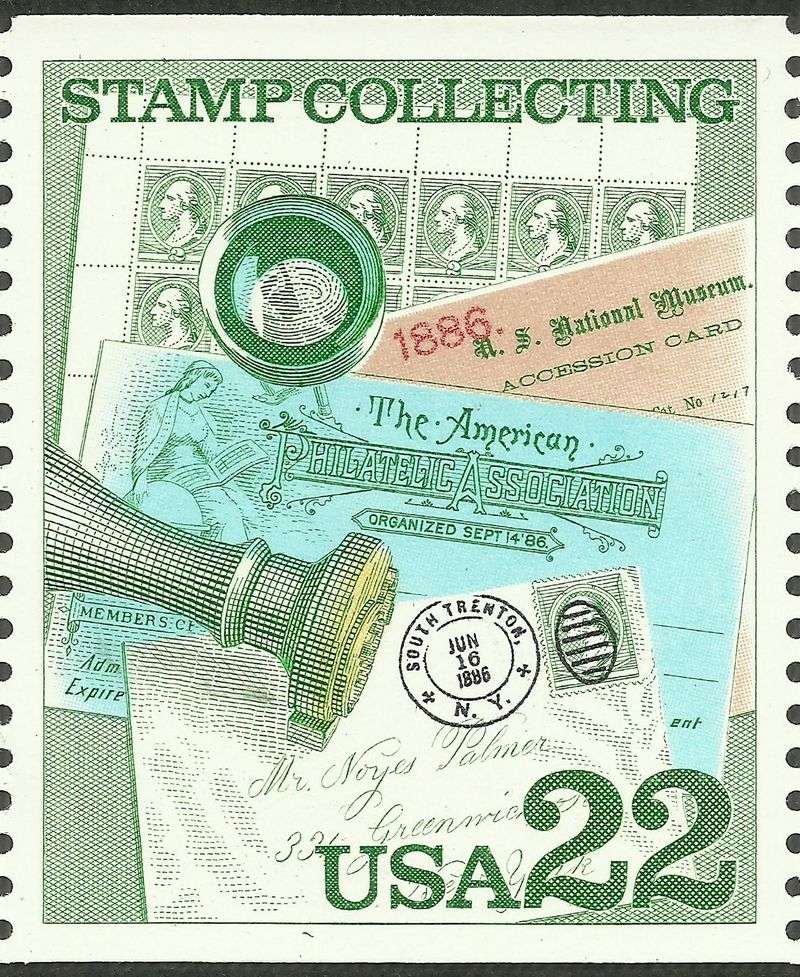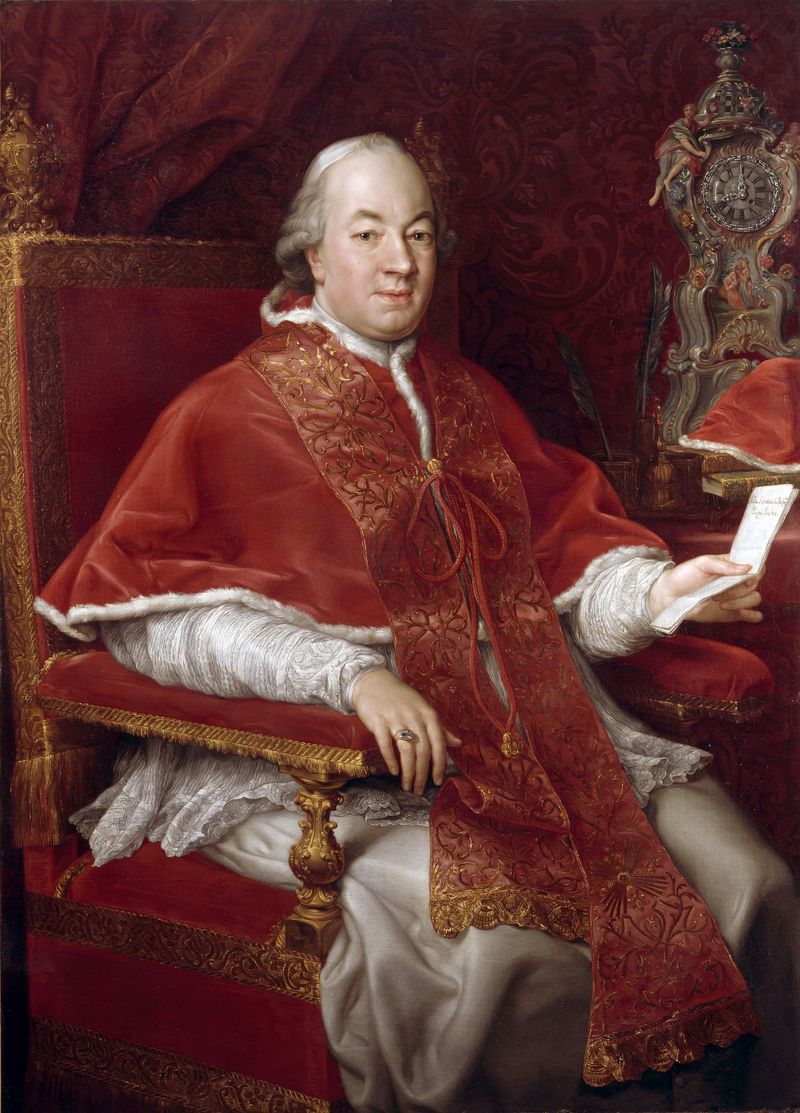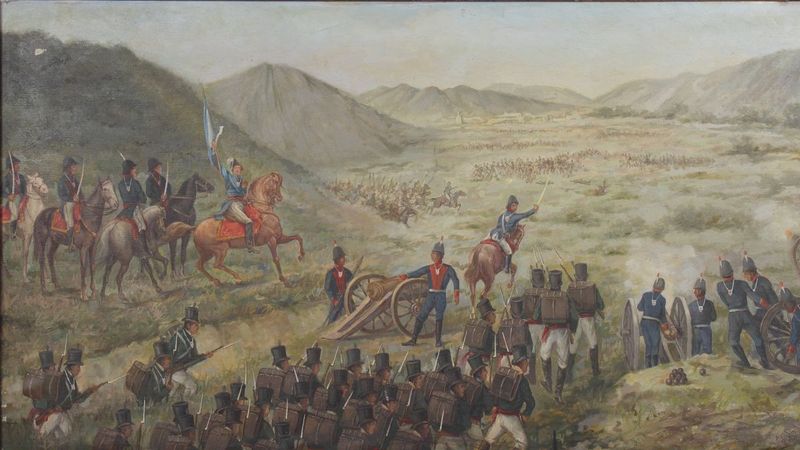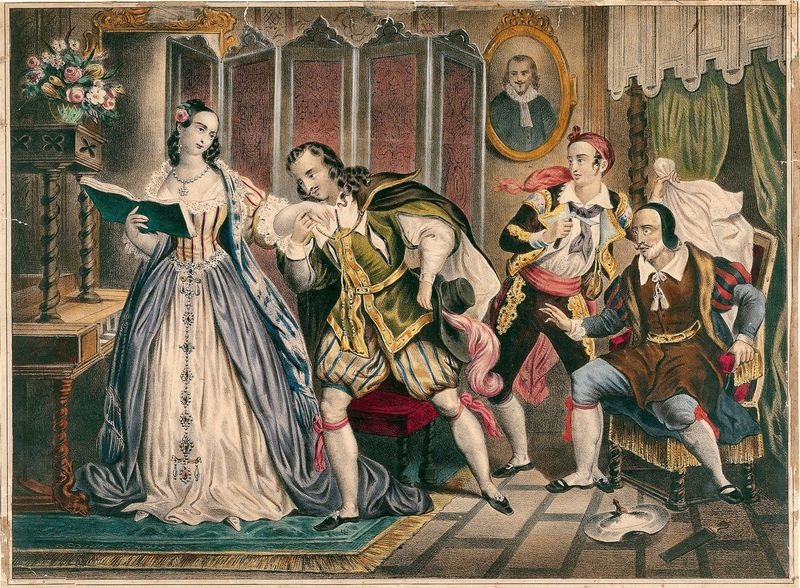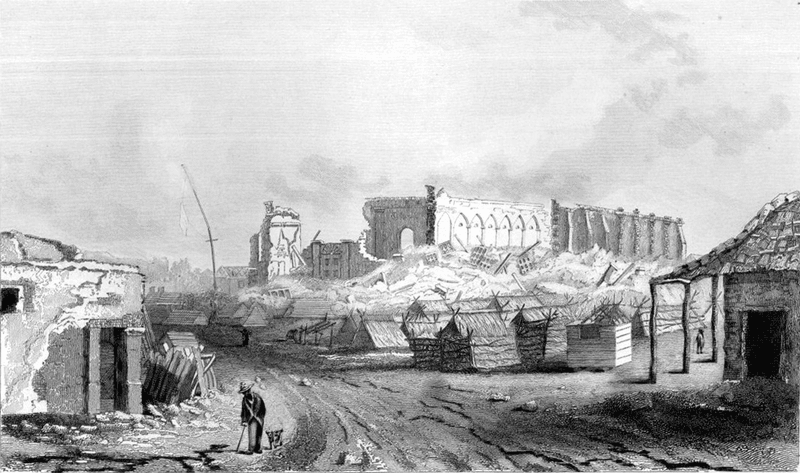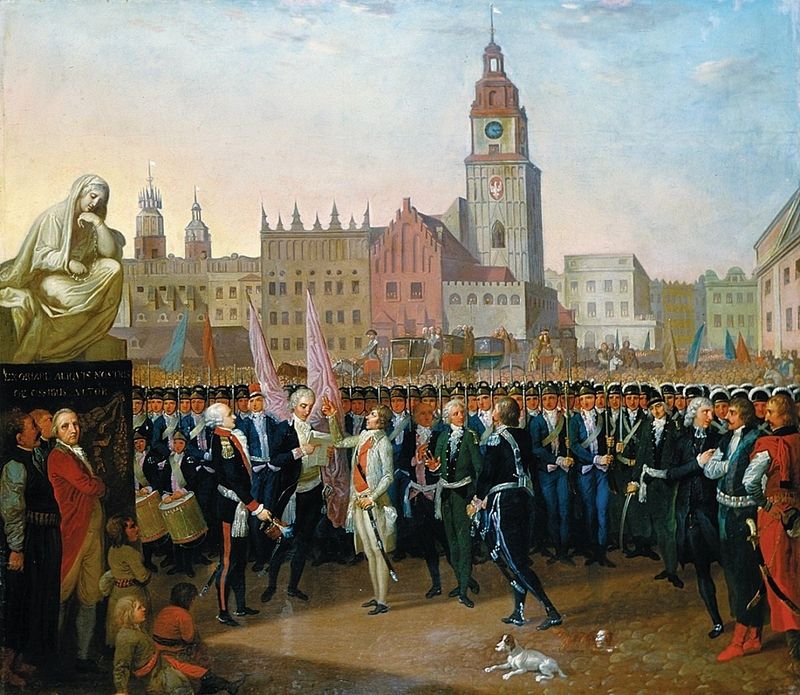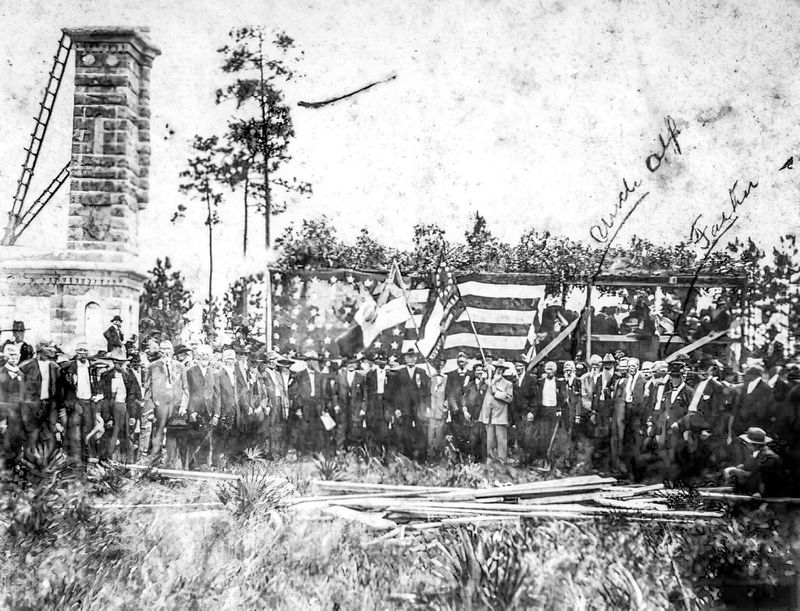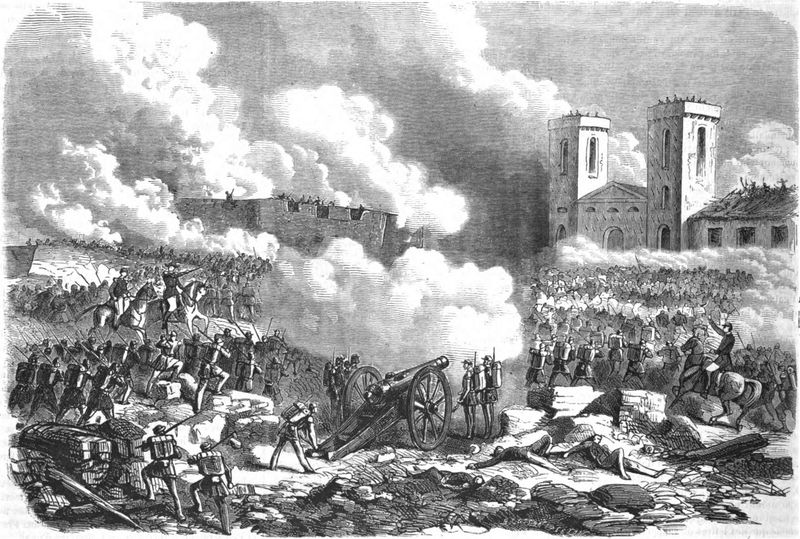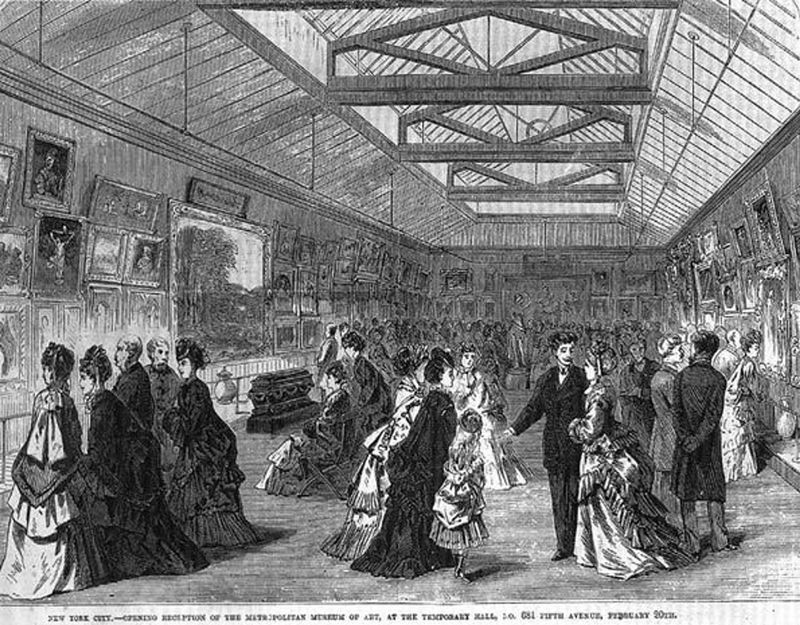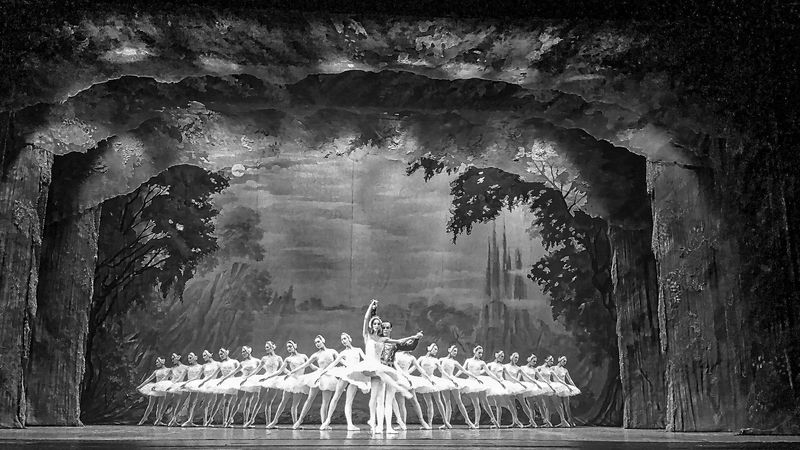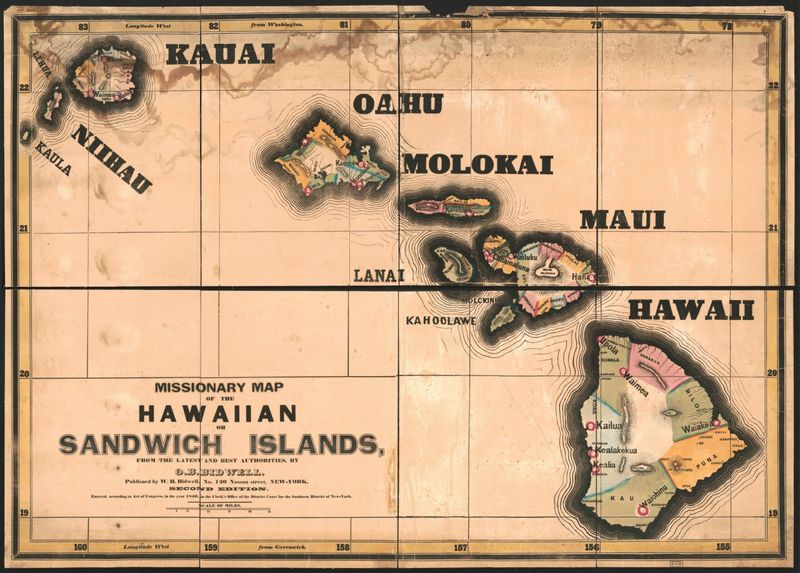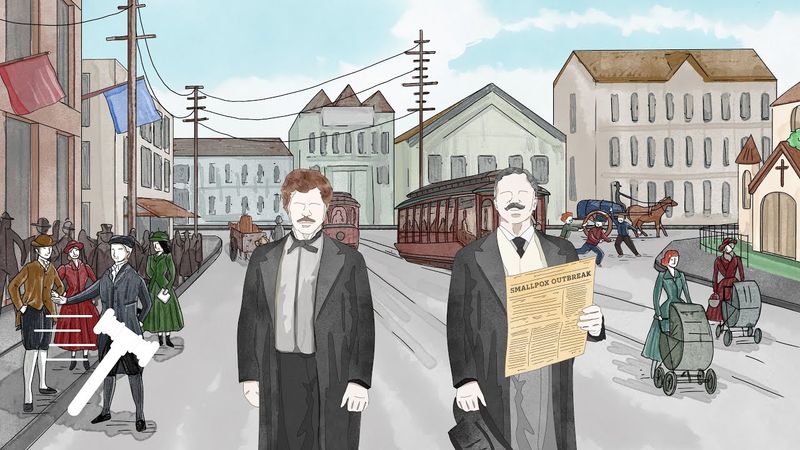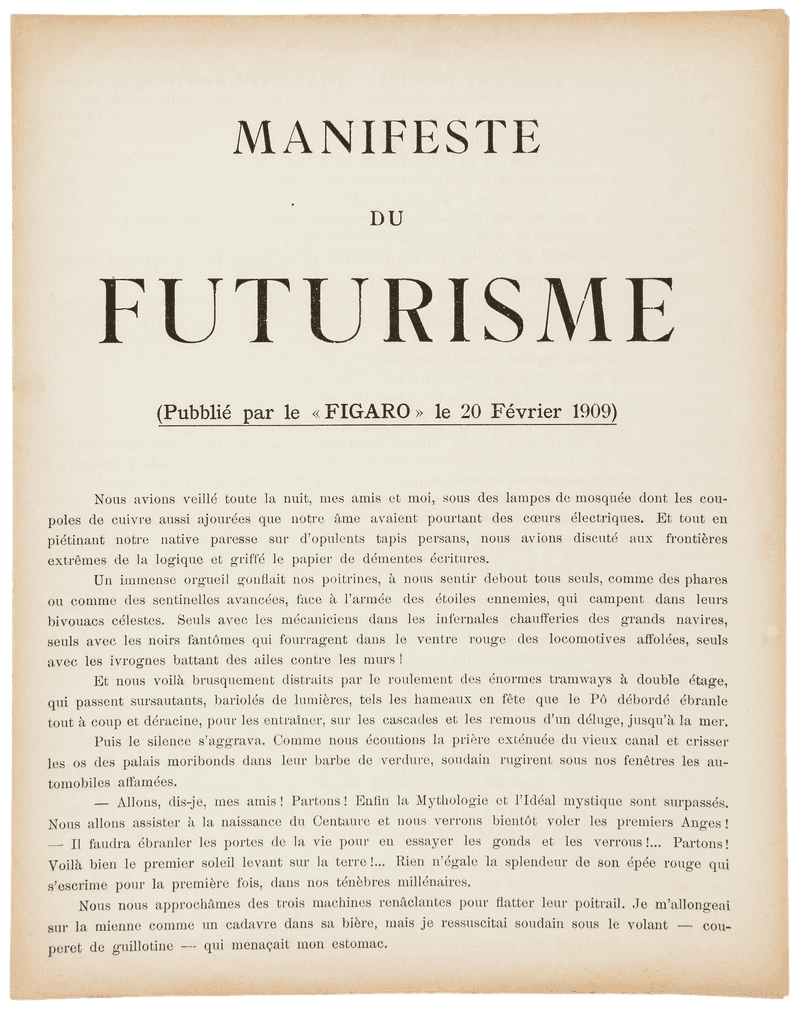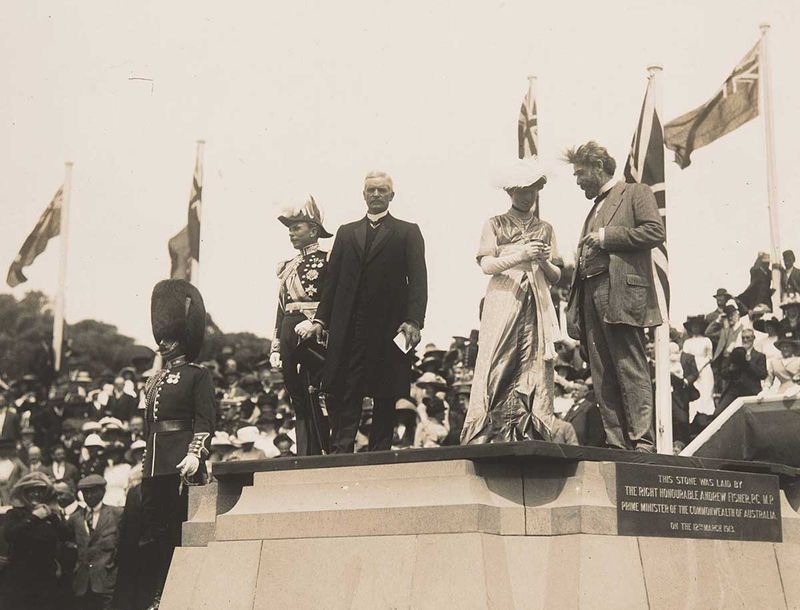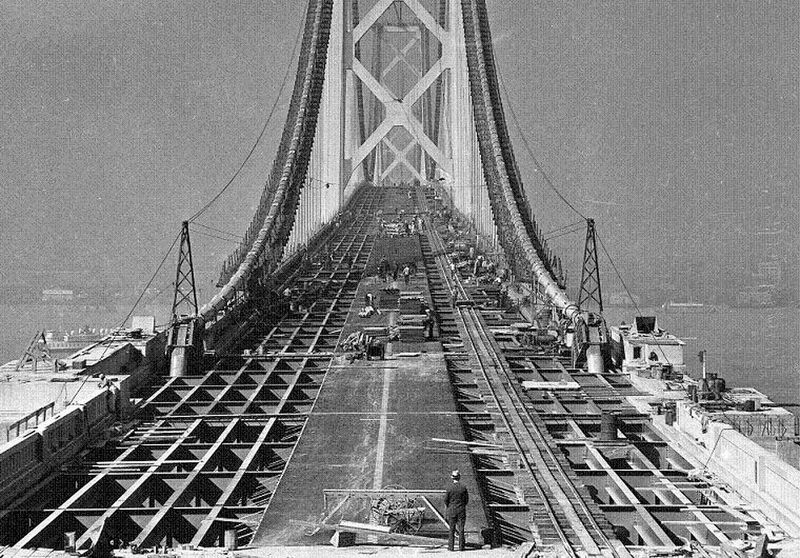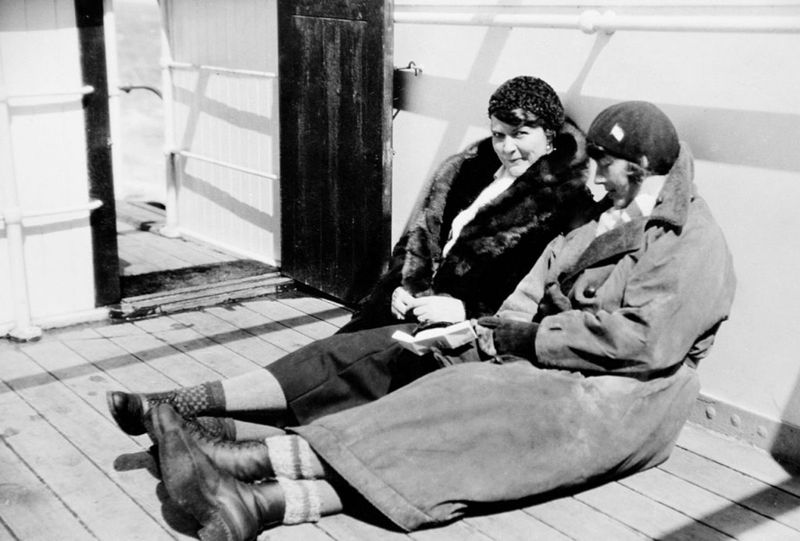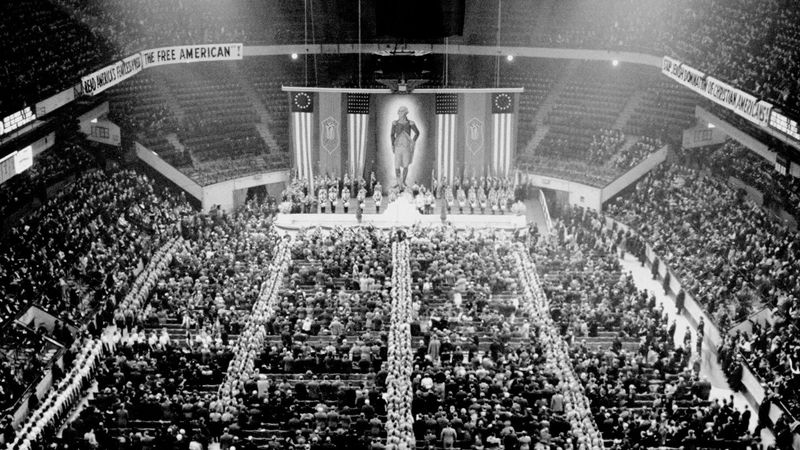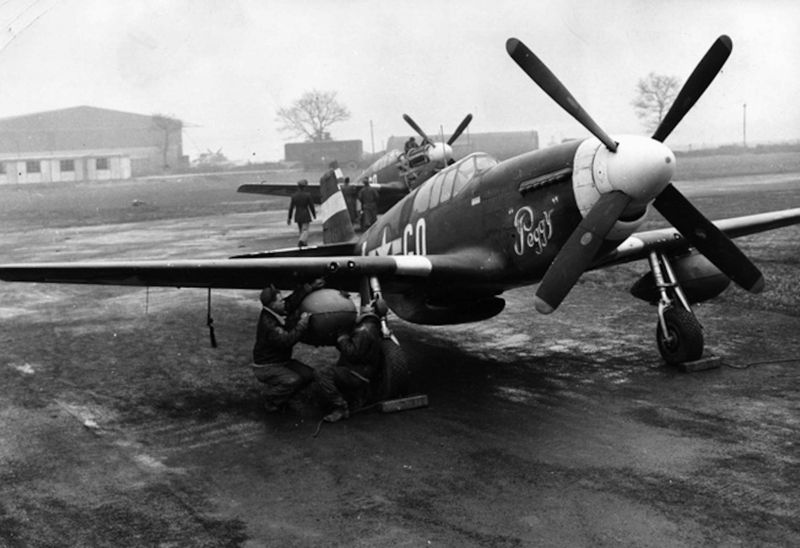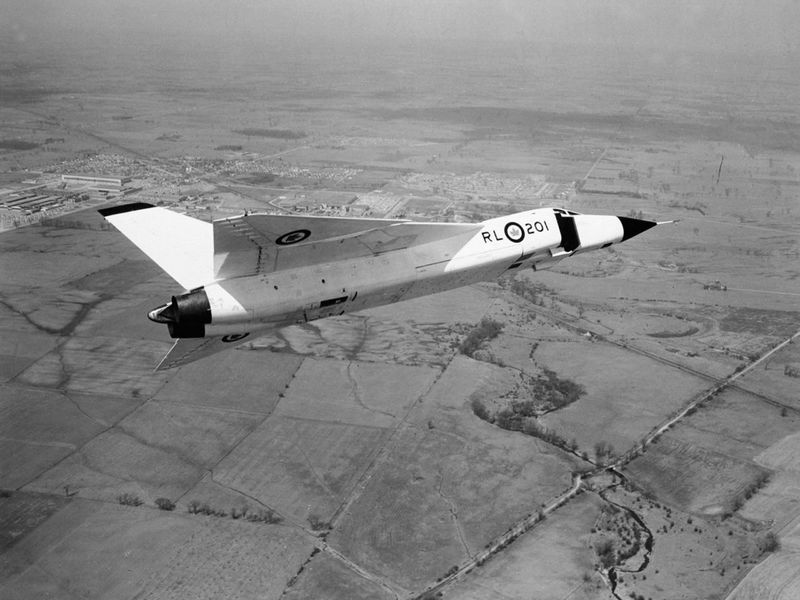Explore the rich tapestry of history by delving into 30 remarkable events that took place on February 20th. Each event paints a vivid picture of our past and offers unique insights into the world’s cultural and political evolution.
1. 1339 – Battle of Parabiago
On February 20, 1339, the Battle of Parabiago unfolded in the Lombardy region. Milanese forces, led by Luchino Visconti, faced off against mercenaries known as the St. George’s Company.
Amidst the chaos, Visconti’s ambition to expand his territory met with a formidable resistance. The battlefield was a tumultuous scene of medieval warfare, with soldiers clashing amid the clamor of swords and shields.
Despite their efforts, the Milanese forces suffered a defeat, marking a significant moment in the region’s history. This battle left a lasting impact on the political dynamics of Northern Italy.
2. 1472 – Orkney & Shetland Pawned
In a move of political strategy, Norway pawned the Orkney and Shetland islands to Scotland on February 20, 1472. This exchange was part of a dowry agreement for the marriage of Margaret of Denmark to James III of Scotland.
The islands, previously under Norwegian control, became integral to Scotland’s territorial landscape. This pawn of territories signified a blend of political, marital, and territorial negotiations during the medieval times.
The islands’ cultural and historical influence continued to evolve under Scottish rule, adding layers to their rich heritage.
3. 1521 – Ponce de León’s Expedition
Juan Ponce de León embarked on a significant expedition from Spain on February 20, 1521. Setting sail with about 200 colonists, de León’s journey was aimed at establishing a settlement in Florida. This venture marked an important chapter in the exploration and colonization of the New World.
The expedition was fraught with challenges, from navigating unknown waters to encountering indigenous tribes.
Despite its ambitious start, the voyage faced numerous obstacles, reflecting the adventurous spirit and the relentless pursuit of new territories during the Age of Exploration.
4. 1547 – Edward VI Crowned
On February 20, 1547, the coronation of Edward VI took place at Westminster Abbey, marking his ascent as King of England. Edward, the son of Henry VIII and Jane Seymour, was only nine years old at the time.
The ceremony was a splendid affair, showcasing regal traditions and the continuity of the Tudor lineage. Despite his young age, Edward’s reign was characterized by significant religious reforms that shaped England’s ecclesiastical landscape.
The coronation was not just a formality but a prelude to a transformative period in English history.
5. 1553 – Birth of the Chaldean Catholic Church
February 20, 1553, marked a pivotal moment in ecclesiastical history with the ordination of Yohannan Sulaqa as bishop. This event signaled the birth of the Chaldean Catholic Church, a significant development in the Christian world.
The ordination took place amidst complex religious dynamics, reflecting the diversity of Christian traditions in the Middle East. Sulaqa’s leadership laid the foundation for a church that would bridge Eastern and Western Christian practices.
The Chaldean Catholic Church continues to play a vital role in preserving cultural and religious heritage.
6. 1685 – Fort St. Louis Established
René-Robert Cavelier established Fort St. Louis on February 20, 1685, at Matagorda Bay in present-day Texas. This marked France’s claim to the region, highlighting the competitive European colonization efforts in the New World.
The fort’s establishment was a strategic move to expand French influence, serving as a base for further exploration. However, the harsh environment and isolation posed challenges for the settlers.
This endeavor reflected the broader colonial ambitions of the era and laid the groundwork for future territorial claims in North America.
7. 1792 – Postal Service Act Signed
The Postal Service Act was signed into law by President George Washington on February 20, 1792. This pivotal legislation established the United States Post Office Department, a vital institution for national communication.
The act laid the foundation for a system that would connect distant communities, facilitating the exchange of information. It marked a significant step towards building a cohesive nation, underpinning the growth of democracy.
The establishment of the postal service was more than a logistical feat; it was a symbol of unity and progress.
8. 1798 – Berthier Removes Pope Pius VI
In a dramatic turn of events, General Louis-Alexandre Berthier entered Rome on February 20, 1798, and deposed Pope Pius VI. This act was part of the broader revolutionary upheavals sweeping across Europe.
The removal of the Pope altered the balance of power, challenging the established religious and political order. Berthier’s actions were emblematic of the era’s turbulent shifts, as new ideologies clashed with traditional authority.
This event underscored the profound transformations that would shape the continent’s future.
9. 1813 – Battle of Salta
The Battle of Salta, fought on February 20, 1813, was a decisive victory for the Argentine forces led by General Manuel Belgrano. This engagement was instrumental in the Argentine War of Independence.
The battle unfolded in the region of Salta, where Belgrano’s strategic acumen overcame numerically superior royalist forces. This victory boosted the morale of the independence movement, paving the way for subsequent successes.
The triumph at Salta was a testament to the determination and resilience of those fighting for freedom.
10. 1816 – The Barber of Seville Premieres
Gioachino Rossini’s opera “The Barber of Seville” premiered with flair on February 20, 1816, at the Teatro Argentina in Rome. This debut marked the beginning of the opera’s enduring popularity.
The performance was met with enthusiasm, capturing the audience’s imagination with its lively music and engaging storyline. Despite initial challenges, including a rowdy opening night, the opera quickly became a staple in the repertoire.
Rossini’s work highlighted the power of music and humor to transcend cultural boundaries, leaving a lasting impact on the world of opera.
11. 1824 – Megalosaurus Named
In a groundbreaking moment for paleontology, William Buckland formally named Megalosaurus on February 20, 1824. This was the first scientifically valid naming of a non-avian dinosaur species.
The designation of Megalosaurus marked a new era in understanding prehistoric life, laying the groundwork for future discoveries. Buckland’s work demonstrated the potential of fossils to unravel Earth’s distant past.
This momentous event in scientific history sparked curiosity and expanded the horizons of natural history, inspiring generations of researchers.
12. 1835 – Concepción Earthquake
On February 20, 1835, a powerful earthquake struck Concepción, Chile, causing widespread destruction. The quake was one of the most significant seismic events in the region’s history.
The impact was catastrophic, with numerous buildings collapsing and infrastructure severely damaged. The disaster highlighted the vulnerability of human settlements to natural forces.
Despite the devastation, the resilience of the local population shone through as they worked to rebuild their community. The earthquake was a stark reminder of nature’s immense power and the challenges of living in seismically active areas.
13. 1846 – Kraków Insurrection
The Kraków Insurrection erupted on February 20, 1846, as Polish nationalists rose against foreign domination. This rebellion was a pivotal moment in Poland’s quest for independence during the 19th century.
The insurrection reflected the deep-seated desire for self-determination among Poles, who faced oppression from occupying powers. Though ultimately suppressed, the uprising galvanized national sentiment and inspired future generations.
The Kraków Insurrection was more than a battle; it was a symbol of hope and resilience in the face of adversity, contributing to Poland’s enduring struggle for freedom.
14. 1864 – Battle of Olustee
The Battle of Olustee, fought on February 20, 1864, was the largest battle in Florida during the American Civil War. Union and Confederate forces clashed near Olustee, with significant casualties on both sides.
The battle was a strategic attempt by Union forces to disrupt Confederate supply lines and gain control of Florida. However, the Confederates emerged victorious, reinforcing their hold on the region.
The battle’s outcome underscored the complexities of the Civil War and the challenges of waging war in varied terrains. It also highlighted Florida’s strategic importance in the conflict.
15. 1865 – End of the Uruguayan War
On February 20, 1865, peace negotiations concluded the Uruguayan War, as President Villalba and rebel leader Flores reached an agreement. This marked the end of a turbulent conflict that had engulfed the nation.
The peace agreement was a critical step toward stabilizing Uruguay and rebuilding its political landscape. Despite the settlement, tensions lingered, setting the stage for future conflicts.
The conclusion of the war highlighted the complexities of regional politics and the challenges of achieving lasting peace in a divided society.
16. 1872 – The Met Opens in New York
The Metropolitan Museum of Art, known as The Met, opened its doors on February 20, 1872, in New York City. This cultural milestone marked the beginning of a prestigious institution dedicated to art and education.
The opening was celebrated with enthusiasm, as visitors marveled at the diverse collections on display. The Met’s establishment was a testament to the growing appreciation for art and culture in America.
Over the years, The Met has become a beacon of artistic excellence, fostering creativity and knowledge through its vast collections and exhibitions.
17. 1877 – Swan Lake Premieres
Tchaikovsky’s ballet “Swan Lake” premiered on February 20, 1877, at Moscow’s Bolshoi Theatre. The debut of this iconic ballet marked a significant moment in the world of performing arts.
The performance captivated audiences with its enchanting music and intricate choreography. Although initially met with mixed reviews, “Swan Lake” eventually gained enduring popularity.
The ballet’s themes of love and transformation resonate with audiences to this day, showcasing the timeless appeal of Tchaikovsky’s work. “Swan Lake” remains a beloved classic, celebrated for its emotional depth and artistic brilliance.
18. 1901 – Hawaii Legislature Convenes
On February 20, 1901, the first session of the Hawaii Territory’s legislature convened. This event marked a new chapter in Hawaii’s political history as it transitioned from a kingdom to a U.S. territory.
The legislature’s convening was a key step in integrating Hawaii into the American political framework. Lawmakers gathered to address the islands’ unique needs and challenges, shaping policies that would impact future generations.
The session highlighted the complexities of governance in a diverse and culturally rich environment, laying the groundwork for Hawaii’s development as a modern state.
19. 1905 – Jacobson v. Massachusetts
The U.S. Supreme Court upheld mandatory smallpox vaccination in the landmark case Jacobson v. Massachusetts on February 20, 1905. This ruling was a cornerstone in public health law, affirming the government’s authority to enforce health regulations.
The case arose from a challenge to Massachusetts’ vaccination mandate, reflecting tensions between individual rights and community welfare. The decision underscored the importance of vaccination in controlling infectious diseases.
Jacobson v. Massachusetts set a precedent for future public health measures, balancing individual liberties with societal needs in the pursuit of public safety.
20. 1909 – Futurist Manifesto Published
On February 20, 1909, Le Figaro published the Futurist Manifesto, heralding the birth of a revolutionary artistic movement. The manifesto, penned by Filippo Tommaso Marinetti, celebrated modernity and embraced the dynamism of the 20th century.
Futurism sought to break free from traditional artistic conventions, advocating for innovation and change. The movement influenced various art forms, from literature to visual arts, leaving a profound impact on the cultural landscape.
The publication of the manifesto was a bold declaration of artistic rebellion and a call to embrace the future’s possibilities.
21. 1913 – Canberra’s Construction Begins
King O’Malley, serving as Minister for Home Affairs, formally marked the commencement of Canberra’s construction on February 20, 1913. This event signified the beginning of building Australia’s new capital city.
The decision to establish Canberra as the capital was driven by the need for a neutral location between Sydney and Melbourne. The city’s construction symbolized national unity and progress, as architects and planners envisioned a modern metropolis.
Canberra’s development reflected Australia’s aspirations and the importance of deliberate planning in shaping a nation’s identity.
22. 1920 – Georgian Earthquake
A devastating earthquake struck Georgia on February 20, 1920, causing significant loss of life and damage. The quake had a profound impact on the town of Gori, where between 114 and 130 people were killed.
The disaster underscored the challenges of earthquake-prone regions and the importance of resilient infrastructure. Rescue efforts were mobilized, highlighting the community’s solidarity in the face of adversity.
The earthquake served as a reminder of the need for preparedness and the resilience of those affected by natural calamities.
23. 1931 – Bay Bridge Approved
The U.S. Congress approved the construction of the San Francisco–Oakland Bay Bridge on February 20, 1931. This decision paved the way for one of the most iconic infrastructural projects in California’s history.
The bridge was envisioned as a vital link between San Francisco and Oakland, facilitating transportation and commerce. Its construction represented a feat of engineering and a testament to human ingenuity.
The Bay Bridge has since become a symbol of connectivity and progress, contributing to the region’s economic and cultural vibrancy.
24. 1935 – First Woman in Antarctica
Caroline Mikkelsen made history on February 20, 1935, becoming the first woman to set foot on the Antarctic continent. This achievement marked a significant milestone in the history of exploration.
Mikkelsen’s journey was part of a Norwegian expedition, where she accompanied her husband, a ship captain. Her presence in Antarctica challenged gender norms, opening the way for future women explorers.
The expedition underscored the spirit of adventure and the allure of the unknown, highlighting the expanding horizons of human exploration.
25. 1939 – Madison Square Garden Nazi Rally
On February 20, 1939, Madison Square Garden in New York City hosted the largest pro-Nazi rally in U.S. history. The event drew a crowd of 20,000, reflecting a disturbing chapter in American history.
The rally, organized by the German American Bund, showcased the influence of Nazi ideology in the United States. However, it also sparked widespread protests and opposition, highlighting the nation’s commitment to democratic values.
This event served as a reminder of the dangers of extremism and the importance of vigilance in safeguarding freedom.
26. 1942 – Edward O’Hare’s Aerial Feat
Lieutenant Edward O’Hare achieved fame on February 20, 1942, by becoming America’s first World War II flying ace. His aerial combat prowess during a mission near Rabaul earned him this prestigious title.
O’Hare’s actions showcased extraordinary bravery and skill, reflecting the valor of allied air forces during the war. His feats were celebrated as symbols of hope and resilience in the face of adversity.
O’Hare’s legacy is a testament to the courage and dedication of those who served in the air, defending freedom during a critical period in history.
27. 1943 – Norman Rockwell’s Four Freedoms Debut
The Saturday Evening Post published the first of Norman Rockwell’s iconic “Four Freedoms” paintings on February 20, 1943. These artworks were inspired by President Franklin D. Roosevelt’s 1941 State of the Union address.
Rockwell’s paintings captured the essence of freedom of speech, worship, want, and fear. They resonated deeply with the American public, serving as powerful symbols during World War II.
The “Four Freedoms” became timeless representations of American ideals, illustrating the enduring power of art to inspire and unite people in challenging times.
28. 1944 – “Big Week” Begins
February 20, 1944, marked the beginning of “Big Week,” a series of strategic American bomber raids on German aircraft factories during World War II. This campaign aimed to cripple Germany’s air capabilities.
The raids involved coordinated efforts by Allied forces, marking a turning point in the air war over Europe. “Big Week” was characterized by its intensity and scale, showcasing the determination to achieve air superiority.
The success of the campaign underscored the importance of strategic air power and the collaborative efforts of Allied nations to defeat the Axis powers.
29. 1952 – Emmett Ashford Breaks Barriers
February 20, 1952, was a landmark day in baseball history when Emmett Ashford became the first African-American umpire in organized baseball. His appointment marked a significant step towards racial integration in the sport.
Ashford’s presence on the field challenged prevailing stereotypes and opened doors for future generations of minority officials. His career was characterized by professionalism and dedication, earning respect from players and fans alike.
Ashford’s legacy is a testament to the ongoing struggle for equality and the transformative power of sports in bridging societal divides.
30. 1959 – Avro Arrow Cancelled
On February 20, 1959, Canada’s ambitious Avro Arrow project was abruptly cancelled. This decision ended the development of the advanced supersonic jet fighter, sparking significant debate.
The cancellation was influenced by a combination of political, economic, and strategic factors. It led to widespread disappointment among engineers and the public, who had envisioned the Arrow as a symbol of national pride and innovation.
The project’s termination marked a turning point in Canada’s aerospace industry, reflecting the complexities of defense policies and the challenges of sustaining high-tech ventures.
